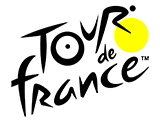CHAMPAGNOLE
Gallo-Roman and Merovingian Archaeological Museum
The Archaeological Museum was created in 1985 to house important collections from archaeological excavations carried out at that time in the vicinity of Champagnole. Its aim is to preserve and display collections that help visitors understand the history and evolution of the Upper Ain Valley region. This municipal museum is under the scientific and technical responsibility of the Jura Departmental Archaeology Conservation Service.
Saint-Cyr-et-Sainte-Julitte Church
Construction: 1755
Style: classical.
History: in this church, the tabernacle was built in 1764 and then demolished in 1793. It was replaced by a 17th-century altarpiece from the Ursulines of Poligny, purchased in 1792 after the convent was closed. In 1788, the church was deemed too small and was enlarged with two side aisles. The organ was built in 1721 by the organ builder Marin Carouge. It was first installed in the Dominican church in Poligny and only became the property of the church in Champagnole during the French Revolution in 1792. It was not installed until 1807 in the specially built gallery. It remains one of the jewels of the town's cultural heritage.
Listed as: Historic Monument in 1994.
Route des Sapins Little elves guide travellers along the Route des Sapins, from Champagnole to Levier, through one of the most beautiful fir tree forests in Europe, dotted with 19 tourist sites where you can discover its history, fauna, flora, unique features, exploitation, walks, viewpoints, etc.
Palladian Villa of Syam (6 km away)
Built in 1818.
History: a unique testimony to the life of the ironmasters, the Palladian villa is a treasure of neoclassical architecture built by its patron, Emmanuel Jobez. Respecting the rules of the art of Italian Renaissance architect Andrea Palladio, the house is built around a peristyle forming a theatre. The villa has retained its period furniture, creating a moving atmosphere that takes visitors on a journey through the centuries.
Special characteristics: visitors can admire a fabulous collection of papers dating from the early 19th century, which are in an astonishing state of preservation.
Listed as: Historic Monument since 1994.
SOLAISON PLATEAU
Plateau de Solaison
Above the village of Brison, the Solaison plateau is located at an altitude of 1,500 metres in the heart of nature, nestled between the Pointe d'Andey and the Leschaux rocks. It is home to mountain pastures in summer and transforms into a ski area in winter in a preserved wilderness setting. It comprises around fifty scattered mountain chalets, now residential, which bear witness to a pastoral tradition and were once directly linked to the agricultural activities of the commune of Brison.
La Fruitière holiday cottage
Located in the commune of Brison, in Haute Savoie, the former dairy on the Solaison plateau was converted into a group gîte in the early 1990s. The gîte, which is open all year round, can sleep thirty-six people and prepares meals for groups of eight to thirty-six.
Saint-Théodule Church in Brizon
Construction: 1480, then 1852 for the current church.
Style: Sardinian neoclassical.
History: a first chapel was built around 1480 and dedicated to Our Lady, then to Theodore of Octodure. The current church was rebuilt on this former site between 1850 and 1852, according to the plans of architect Ernesto Melano. The building is unusual in that the choir faces west rather than east, as is customary.
Pointe d'Andey
This mountain is located in the north of the Bornes massif. It is surrounded by the Arve Valley, home to the towns of Bonneville and Saint-Pierre-en-Faucigny to the north, the Borne Valley and the Evaux Gorges to the west, the Col de Solaison, which separates it from the Leschaux rocks to the south, and the Mont-Saxonnex plateau to the east. The summit, which rises to an altitude of 1,877 metres, is accessible from the Col de Solaison. The Pointe d'Andey was depicted by Swiss painter Ferdinand Hodler in 1909. This painting, which belongs to the Orsay Museum in Paris, was originally called Paysage (Landscape); it is now entitled La Pointe d'Andey, Vallée de l'Arve (The Pointe d'Andey, Arve Valley) following the identification of the mountain's characteristic shape.
Rochers de Leschaux
This mountain is located in the north of the Bornes massif. It is surrounded by the Borne valley, where the village of Le Petit-Bornand is located to the west and south, the Col de Cenise to the east and the Col de Solaison to the north. The summit, which rises to an altitude of 1,936 metres, is located on the edge of the cliff overlooking Le Petit-Bornand and marks the edge of a ridge.
Folge uns
Erhalten sie exklusive informationen zur Tour de France













